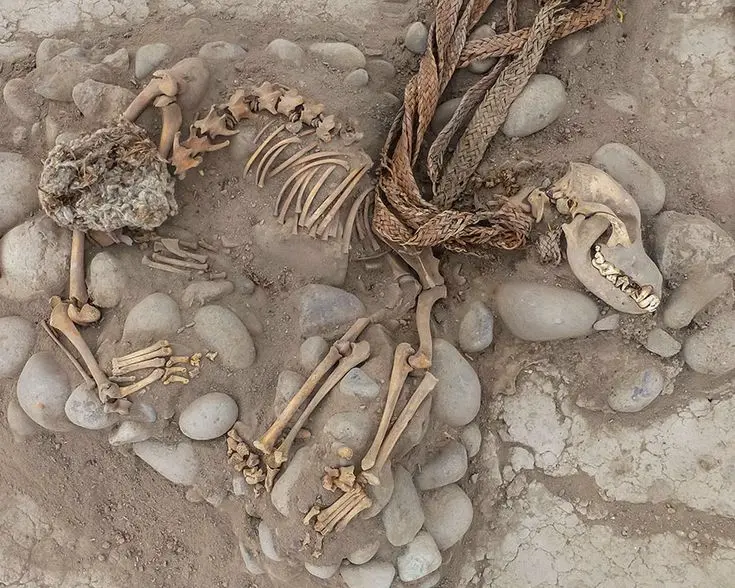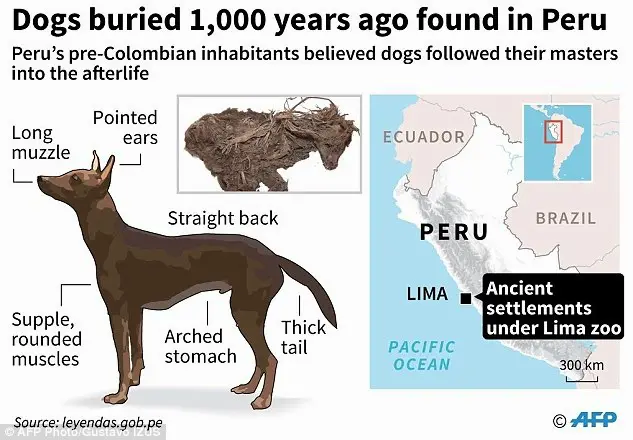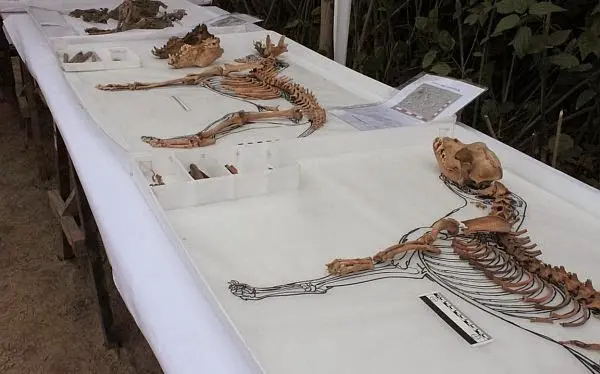Ancient Secrets Revealed From Enigmatic 1,000-Year-Old Dog Burial Under Lima Zoo
Archaeologists in Peru have unearthed more than 100 dog skeletons dating back approximately 1,000 years in the Parque de las Leyendas, Lima. These findings provide insight into the cultural and ritual significance of dogs in pre-Columbian Peru.

Excavations at the Lima Zoo have uncovered more than 100 well-preserved dogs
The excavations took place within the Maranga Archaeological Complex, one of the largest ancient cities in Lima. In 2012, Karina Venegas Gutiérrez and her team discovered 138 dogs and 134 humans buried together. These remains were found amid layers of settlements dating back millennia, representing a transitional period for coastal societies from the Lima culture (300-800 AD) to the Ychsma culture (900-1470 AD).
Since 2001, the remains of 138 dogs and 134 humans have been found inside wak’a, or sacred sites, at the Parque de Leyendas zoo in Lima, Peru.
The dogs were buried in resting positions, wrapped in textiles similar to those used for humans. Most belonged to breeds of stray dogs still present in Peru. Some of the dogs were so well preserved that their skin, hair, and even noses and ears remained intact. Initial observations suggest that these dogs were probably strangled, as they show no signs of fatal skeletal injuries, unlike human remains, which show signs of violent death, such as skull fractures and broken ribs.

An archaeologist works on the remains of a dog found at Lima’s Parque de las Leyendas zoo
It is unusual to find dogs and humans buried together. At other Peruvian sites, dogs have been found in separate cemeteries, indicating a different kind of ritual. The theory that dogs were companions to humans in the afterlife is supported by previous discoveries, such as the 2006 discovery of 40 mummified dogs in a pet cemetery south of Lima, buried with food and blankets.
Archaeologists suggest that the simultaneous burials of dogs and humans could have been part of a ritual sacrifice, potentially after a traumatic communal event. This hypothesis is supported by the disposition of remains and signs of violence on the human skeletons. The discovery of a child huddled next to a pregnant dog adds a poignant detail to the burial practices.

An illustration shows slaughtered Ichma dogs, often found with ropes around their necks, showing signs of throat-slitting or strangulation wounds.
The Parque de las Leyendas remains a rich archaeological site with 54 wak’as (sacred sites) yet to be fully explored. Recent finds include eight well-preserved dogs and a mummified guinea pig. Researchers aim to better understand the interactions between ancient Peruvians and their dogs, tracing their evolution and cultural significance over time.
The Parque de las Leyendas is situated in an area that was a sacred site to at least three ancient civilizations: the Lima culture (100-650 CE), the Ichma culture (900-1470 CE), and the Incas (1200-1500 CE). Before being converted into a zoo in 1964, it was used for various religious rites and funerals. Archaeologists believe that dogs were sacrificed by the Ichma culture, and they were often found with ropes around their necks, indicating strangulation or having their throats slit.

The animals’ legs were tied and they had ropes around their necks.
The remains are important for understanding the origins of domesticated dogs in South America. The Peruvian Hairless Dog, which appeared around 300 AD and still exists today, is part of Peru’s national heritage. This discovery provides valuable information about the historical relationship between humans and dogs in the region.

More than 100 dog skeletons dating back 1,000 years
These discoveries highlight the important role that dogs played in ancient Peruvian societies. From potential guides in the afterlife to sacrificial victims in funeral rites, dogs were deeply intertwined with human life and death. Continued research in this area promises to reveal more about the complex relationship between humans and dogs in pre-Columbian Peru.






